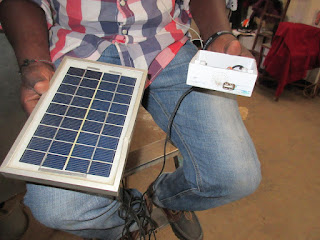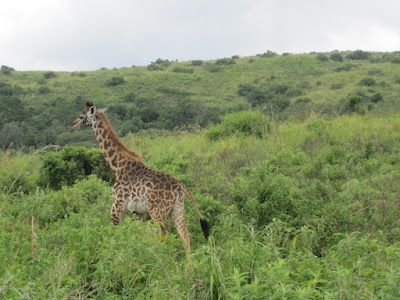Twende (Link)
Tembe is a Swahili word meaning Let's go!, and Twende is a social innovation center and non-profit organization in Arusha, Tanzania. Their motto is We empower people to design and make their own technologies to solve community challenges. We Make, We Teach, We Support.
I found Twende by googling maker space Tanzania. There are not many Do It Yourself (DIY) places in Africa, but I found Twende in Arusha. Since Kim and I were going to be in Arusha three days before the students, I contacted them for a visit. There were some difficulties meeting up, but Frank picked us up for the visit around 3 PM.
The Leadership
We met Deborah Tien, the Executive Director, when we got to Twende. She is an American with a degree in astrophysics from Wellesley College, and has worked in Nicaragua and Tanzania developing design strategies and appropriate technology for less developed countries. She was an exciting to talk. She described the overall goal of Twende, and the challenges Twende has overcome during its existence an her serving as Director.
The other leadership positions are held by Tanzanians. Deborah is leaving soon for a new job, and they have found a good fit in Tanzanian women. So everyone at Twende was very optimistic about the future.
Frank showed us around the space. It is actually a small amount of space they have, especially for the amount of projects and education they are doing. They have a milling machine, a lathe, a welding station, and an electronic station, plus other space for storage, etc. There were posters they used to present their work both in Tanzania and internationally.
Projects on Display
A Solar Mobile Phone Charger
This is a solar mobile phone charger. On the left is a pile of discarded solar panels from a company that was replacing them. Their original purpose was not a charger, but the solar panel works. On the left is what the students take home. The white box is a repurposed junction box with a USB port available through a hole, and inside is a simple circuit to safely proved 5 volts to charge a device. Students learn valuable skills and realize that they can build useful things. Many of the students have never used a drill or soldering iron.
A Spirit (Alcohol) Stove
The core of the stove is made out of the top and bottom of an aluminum soda can. The ring around it is made of a piece of discarded fencing. You pour a small amount of alcohol in it and light it. A small splash of alcohol can heat the water for two or three cups of tea or coffee.
A Flashlight (They call it a torch)
Here Frank is excitedly showing us a flashlight made from a plastic soda bottle, a piece of pipe, and four LED's. It involves a small amount of soldering. He was always talking rapidly, so his hand is blurred.
An Insect Trap
New Technology & Independent Spin-Off Business
Using simple materials, one student made a press for squeezing oil out of an avocado seed. Avocado seed oil is very marketable. One big success story for Twende is that the former student transitioned from Twende technology incubator to a commercial enterprise.
One of Twende's services is to teach the skills necessary to start, and maintain a business.
So, Keep it up, Twende!
One of Twende's services is to teach the skills necessary to start, and maintain a business.
So, Keep it up, Twende!



























































